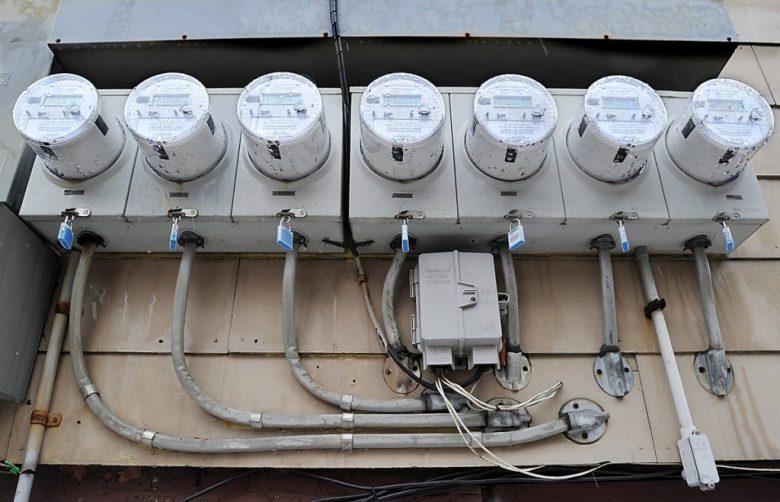Residents of Maine are bracing for an increase in electricity supply costs beginning in January 2026. According to an analysis conducted by Competitive Energy Services, approximately 90% of homes in Maine receive electricity through the state-run standard offer program and can expect an estimated 15% hike in rates. This increase is projected to add about $8 to the monthly bills of an average household.
The anticipated rise in supply costs will occur independently of a separate request by Central Maine Power (CMP) to increase distribution rates. CMP is seeking these adjustments to upgrade its aging infrastructure, which includes wires, poles, and substations. The proposal is currently under review by the Maine Public Utilities Commission and has faced significant opposition from consumers who are already grappling with inflation. By early October, the commission had received a record 617 public comments regarding CMP’s request, highlighting the growing concern over affordability among customers.
Electricity Prices and Natural Gas Dependency
Rising electricity rates are not only a local issue but part of a broader national trend. The federal Energy Information Administration reported that electricity prices have surged by 13% since 2022 and are projected to continue rising into next year. In Maine, the upcoming supply cost increase is primarily driven by the expected rise in wholesale natural gas prices, rather than any influence from artificial intelligence or CMP’s distribution case.
The United States has emerged as the world’s largest exporter of natural gas, with projections indicating that liquefied natural gas (LNG) shipments abroad will double by 2030. This increase comes as part of a broader strategy to enhance American energy dominance, as highlighted during the Trump administration. Unfortunately, higher natural gas prices negatively impact consumers in New England, where approximately half of the region’s electricity is generated from natural gas.
Natural gas prices significantly influence the marginal cost of electricity generation in New England. The Maine Public Utilities Commission is set to review annual bids from generators for standard supply services next month, and market conditions suggest an upward trend in electricity prices. Philip Bartlett, chair of the commission, stated, “Electricity prices track natural gas prices. If we see changes in natural gas prices, they will be reflected in electricity costs.”
Challenges Ahead for Maine Consumers
Electricity supply rates in Maine have experienced significant volatility over the past few years, fluctuating between approximately 6 cents and 16 cents per kilowatt-hour. The latest figures from the Maine Department of Energy Resources show standard offer supply rates at about 11 cents per kWh for CMP and Versant Power’s Bangor Hydro District.
Between 2014 and 2024, Maine recorded the third-fastest growth in total electric rates in the United States. Factors contributing to this increase include a generous solar reimbursement policy, the cost of repairing the delivery grid after severe storms, and, most notably, the volatility of natural gas prices. New England’s constrained gas pipeline system exacerbates these price swings, particularly during the coldest winter days when demand surges.
While natural gas remains the leading fuel source for electricity generation in the U.S., meeting 42% of demand, a growing share is being exported. Recent data from the Institute for Energy Economics and Finance Analysis indicates that the volume of gas exported now exceeds the amount consumed by American power plants. This shift has contributed to rising domestic gas prices, further straining electricity costs for consumers.
The Energy Information Administration projects that the market price for natural gas will increase from $2.20 per million BTU last year to $4.10 in January, underscoring the challenges ahead for Maine residents.
As Mainers express increasing concerns about electricity affordability, Heather Sanborn, Maine’s public advocate for utility customers, noted that the state has limited tools to mitigate supply costs. Her office is advocating for the Maine Public Utilities Commission to explore alternative methods for procuring standard offer contracts. A recent legislative directive encourages the commission to solicit bids more frequently and for varying contract lengths to help stabilize rates.
Despite these efforts, Bartlett indicated that significant changes to reduce supply costs are unlikely in the near term. He acknowledged that a report due in January may offer recommendations for minor adjustments.
To address long-term challenges, both Sanborn and Bartlett highlighted the importance of expanding renewable energy capacity in the region. Solar and wind energy, along with battery storage, could help reduce reliance on natural gas during peak demand periods. However, federal support for renewable projects has diminished, particularly under the Trump administration, which has prioritized fossil fuel generation.
As the situation unfolds, Mainers are left to navigate the complexities of rising electricity costs, with the hope that innovative solutions and increased renewable energy adoption can help alleviate the financial burden.







